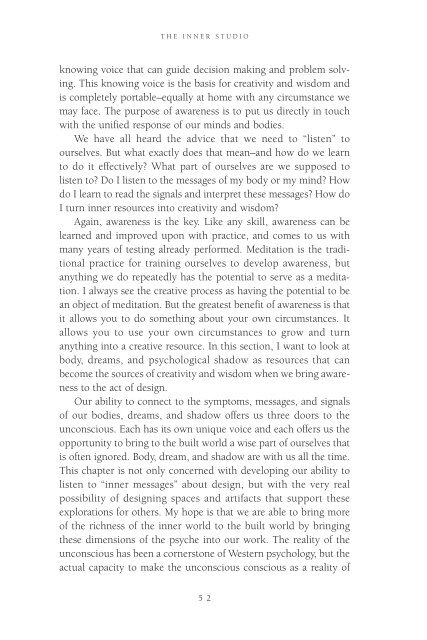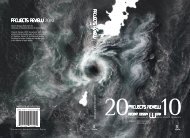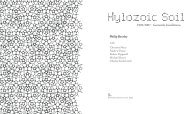The Inner Studio - Riverside Architectural Press
The Inner Studio - Riverside Architectural Press
The Inner Studio - Riverside Architectural Press
Create successful ePaper yourself
Turn your PDF publications into a flip-book with our unique Google optimized e-Paper software.
THE INNER STUDIO<br />
knowing voice that can guide decision making and problem solving.<br />
This knowing voice is the basis for creativity and wisdom and<br />
is completely portable–equally at home with any circumstance we<br />
may face. <strong>The</strong> purpose of awareness is to put us directly in touch<br />
with the unified response of our minds and bodies.<br />
We have all heard the advice that we need to “listen” to<br />
ourselves. But what exactly does that mean–and how do we learn<br />
to do it effectively? What part of ourselves are we supposed to<br />
listen to? Do I listen to the messages of my body or my mind? How<br />
do I learn to read the signals and interpret these messages? How do<br />
I turn inner resources into creativity and wisdom?<br />
Again, awareness is the key. Like any skill, awareness can be<br />
learned and improved upon with practice, and comes to us with<br />
many years of testing already performed. Meditation is the traditional<br />
practice for training ourselves to develop awareness, but<br />
anything we do repeatedly has the potential to serve as a meditation.<br />
I always see the creative process as having the potential to be<br />
an object of meditation. But the greatest benefit of awareness is that<br />
it allows you to do something about your own circumstances. It<br />
allows you to use your own circumstances to grow and turn<br />
anything into a creative resource. In this section, I want to look at<br />
body, dreams, and psychological shadow as resources that can<br />
become the sources of creativity and wisdom when we bring awareness<br />
to the act of design.<br />
Our ability to connect to the symptoms, messages, and signals<br />
of our bodies, dreams, and shadow offers us three doors to the<br />
unconscious. Each has its own unique voice and each offers us the<br />
opportunity to bring to the built world a wise part of ourselves that<br />
is often ignored. Body, dream, and shadow are with us all the time.<br />
This chapter is not only concerned with developing our ability to<br />
listen to “inner messages” about design, but with the very real<br />
possibility of designing spaces and artifacts that support these<br />
explorations for others. My hope is that we are able to bring more<br />
of the richness of the inner world to the built world by bringing<br />
these dimensions of the psyche into our work. <strong>The</strong> reality of the<br />
unconscious has been a cornerstone of Western psychology, but the<br />
actual capacity to make the unconscious conscious as a reality of<br />
52





